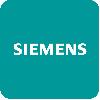New generation controller software
STEP 7 V18 includes new features for all phases of the engineering workflow.
Hardware:
*Innovated S7-1500 / ET 200SP CPUs (releases planned from end of December 2022)##.
- 8 Standard and fail-safe S7-1500 CPUs 1511(F)-1 PN, 1513(F)-1 PN, 1515(F)-2 PN and 1516(F)-3 PN/DP, see also 109811518
- 4 Technology S7-1500 CPUs 1511T(F)-1 PN and 1515T(F), see also 109811523
- 2 Redundant S7-1500 CPUs 1513R-1 PN and 1515R-2 PN, see also 109815625
- 4 Standard and fail-safe ET 200SP CPUs 1510SP(F)-1 PN and 1512SP(F)-1 PN, see also 109811525
- 100 % more program memory and up to 100 % more data memory
- Performance increase depending on CPU and STEP7 project up to factor 5
- Two performance classes
- Low: CPU 1510SP(F)-1 PN to CPU 1513(F)-1 PN
- Middle: CPU 1514SP(F)-2 PN to CPU 1516(F)-3 PN/DP
- Higher communication performance (2nd core)
- The display is integrated in the R-CPUs
- Completely revised display implementation => no own FW necessary
New ET 200SP CPUs 1514SP-2 PN, 1514SP F-2 PN, 1514SP T-2 PN and 1514SP TF-2 PN
- Memory concept, performance, quantity structures and features of a SIMATIC S7-1500 CPU 1515 (F) - 2 PN CPU
- 2 PROFINET IO interfaces
SIMATIC S7-1200
Increased working memory for S7-1200 CPUs:
- CPU 1211C is now 75 KByte in size
- CPU 1212C is now 100 KByte in size
- CPU 1214C is now 150 KByte in size
- CPU 1215C is now 200 KByte in size
- CPU 1217C is now 250 KByte in size
Namespaces
- Within software units you have the possibility to use namespaces to structure the program. Namespaces offer the following advantages, for example:
- Program elements can have the same name if they are located in different namespaces.
- Clear representation of elements in the project navigation
- Clear representation of operands in the program code
Symbolic access at runtime (S7-1500)
- The "Symbolic access at runtime" function enables external applications to access variables in the PLC program at runtime. External applications can be, for example, HMI applications, OPC UA functions or other communication functions. The variables can be read or written.
- The read or write access is not configured statically at the time of program creation. Rather, access is dynamic at runtime. The user enters the symbolic variable names he wants to access manually or program-controlled at runtime.
References to technology objects
You can declare references to technology objects of the "Motion" and "SIMATIC Ident" categories and use them in value assignments. It is also possible to assign DB_ANY to the reference of one of these technology objects. Indirect addressing of technology objects using type-safe pointers is thus supported.
*Traces
- The number of signals to be recorded in the respective trace is increased from 16 to 64.This results in significantly extended possibilities when comparing the signals of a single recording.
*Long-term trace
- Now it is possible for all S7-1500 CPUs, in addition to the already available Trace and Project Trace, to record a Trace that is not recorded in the device but on the hard disk of the computer on which the TIA Portal project is open. This results in significantly better diagnostic possibilities when analyzing the course of signals over a long period of time, which in principle is only limited by the storage capacity of the hard disk.
Fast Fourier Transform (FFT)
- In addition to the possibilities of the Bode diagram, the user now also has an FFT analysis at his disposal.
PID
- The PID auxiliary functions have been extended by the RampSoak instruction, with which you can realize a time-dependent profile.
Motion Control Extensions (V7.0)
- All information about the new Motions Control functions in STEP 7 V18 can be found in this article 109811520
#PLCSIM
- Introduction of a new user interface for PLCSIM, which also allows to use PLCSIM Advanced functions.
- Support of the latest firmware versions in S7-1200 and S7-1500
Editions
SIMATIC STEP 7 Professional V18
- is the powerful and integrated engineering system for the current SIMATIC controllers S7-1500, S7-1200, S7-300, S7-400, WinAC and ET 200 CPU. S7-PLCSIM for simulation of the S7-1500, S7-1200 CPU as well as SIMATIC WinCC Basic for project engineering of the Basic Panels and SINAMICS Startdrive for configuration of drives are included.
- SIMATIC STEP 7 Basic V18
- is the easy-to-use engineering system for the SIMATIC S7-1200 modular mini controller and the associated peripherals. It includes S7-PLCSIM for the simulation of the S7-1200 CPU and SIMATIC WinCC Basic for the project engineering of the SIMATIC Basic Panels.


